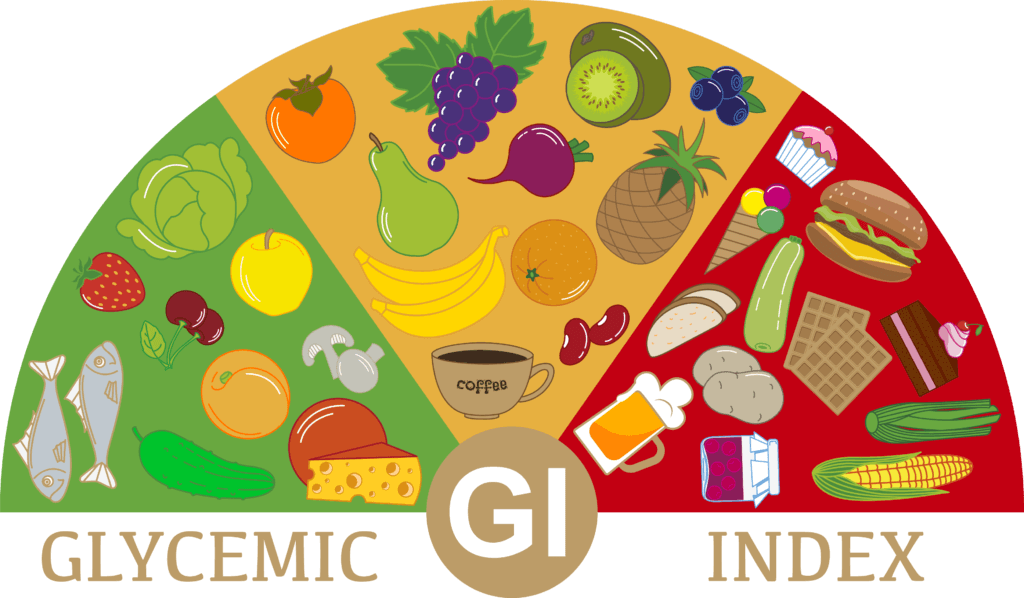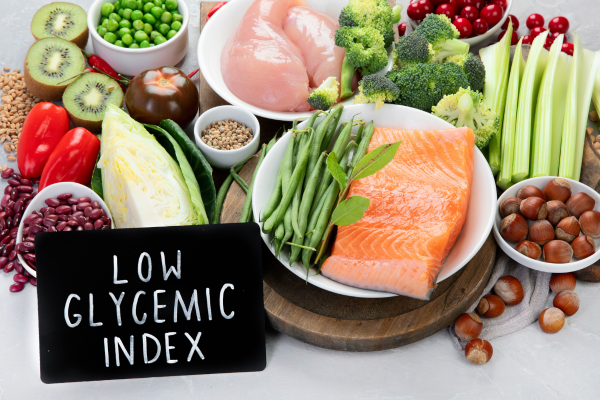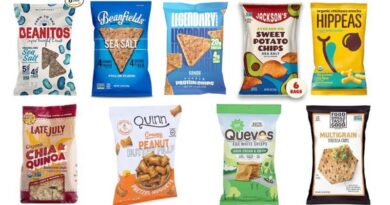The Benefits of Low-Glycemic Index Foods for Diabetes
The low glycemic (low GI) diet revolves around the glycemic index (GI) concept. Research indicates that following a low GI diet can aid in weight loss, lower blood sugar levels, and decrease the risk of heart disease and type 2 diabetes. Nonetheless, its method of ranking foods has faced criticism for being inconsistent and not accurately representing overall food health. This article offers an in-depth examination of the low GI diet, outlining its principles, how to implement it, and its pros and cons.
What is the Glycemic Index?
Carbohydrates, found in foods like bread, cereals, fruits, vegetables, and dairy products, are essential for a balanced diet. When consumed, carbs are broken down into simple sugars that enter the bloodstream. However, not all carbs affect blood sugar the same way.
The glycemic index (GI) measures how foods impact blood sugar levels. Developed by Dr. David Jenkins in the 1980s, the GI ranks foods based on their impact compared to pure glucose, which has a GI of 100.
Foods are classified into three GI categories:
- Low GI: 55 or below
- Medium GI: 56 to 69
- High GI: 70 or above
Low GI foods are preferable because they are digested and absorbed more slowly, leading to a gradual increase in blood sugar levels. Conversely, high GI foods are digested quickly, causing rapid spikes in blood sugar.
Foods without carbohydrates, such as meat and eggs, do not have a GI rating.

Factors Affecting the GI of Foods
Several elements can influence a food’s GI, including:
- Type of Sugar: Not all sugars affect blood sugar the same way. For instance, fructose has a lower GI compared to maltose.
- Starch Structure: Carbs consist of amylose and amylopectin. Amylose is slower to digest, leading to a lower GI. Foods with higher amylose content generally have a lower GI.
- Refinement Level: More processed foods typically have a higher GI due to the disruption of starch structures.
- Nutrient Composition: Adding protein or fat to a meal can slow digestion and lessen the impact on blood sugar levels.
- Cooking Method: Extended cooking times can increase the GI of foods by making sugars more readily digestible.
- Ripeness: As fruits ripen, their GI tends to increase. For example, an overripe banana has a higher GI than an unripe one.
Low GI Diet and Diabetes
Diabetes affects how the body processes sugar, making blood sugar management crucial. Studies suggest that following a low GI diet can help control blood sugar levels in people with diabetes. A review of 54 studies found that low GI diets improved long-term blood sugar control, reduced body weight, and lowered fasting blood sugar levels in those with prediabetes or diabetes.
High GI diets have been linked to an increased risk of developing type 2 diabetes. Research indicates that individuals with high GI diets have a significantly higher risk of type 2 diabetes compared to those with lower GI diets. Additionally, low GI diets may benefit pregnant women with gestational diabetes by improving pregnancy outcomes and reducing the risk of having large babies, which can lead to complications for both mother and child.
Additional Benefits
Beyond diabetes management, a low GI diet offers other potential health advantages:
- Cholesterol Levels: Low GI diets can improve cholesterol profiles by lowering total cholesterol and LDL (bad) cholesterol, which are associated with heart disease.
- Weight Loss: Some evidence suggests that low GI diets can aid in fat loss, though more research is needed for long-term weight management.
- Cancer Risk: High GI diets might be linked to an increased risk of certain cancers, such as endometrial, colorectal, and breast cancer, while low GI diets could reduce this risk.
- Heart Disease: High GI and GL diets are strongly associated with a higher risk of heart disease.
Foods to Include on a Low GI Diet
On a low GI diet, there’s no need to count calories or track specific nutrients. Instead, focus on replacing high GI foods with low GI alternatives. Here are some examples of low GI foods:
- Bread: Whole grain, multigrain, rye, sourdough
- Breakfast Cereals: Steel-cut oats, bran flakes
- Fruits: Apples, strawberries, apricots, peaches, pears, kiwi, tomatoes
- Vegetables: Carrots, broccoli, cauliflower, celery, zucchini
- Starchy Vegetables: Sweet potatoes, corn, yams, winter squash
- Legumes: Lentils, chickpeas, baked beans, kidney beans
- Pasta and Noodles: Whole wheat pasta, soba noodles
- Rice: Basmati, brown rice
- Grains: Quinoa, barley, buckwheat
- Dairy and Alternatives: Milk, cheese, yogurt, soy milk, almond milk
Foods without carbs, like fish, meat, nuts, and certain oils, don’t have a GI rating but can be part of a low GI diet.

Foods to Avoid on a Low GI Diet
While nothing is strictly off-limits, try to limit high GI foods, including:
- Bread: White bread, bagels, French baguettes
- Breakfast Cereals: Instant oats, sugary cereals like Corn Flakes
- Starchy Vegetables: Certain potato varieties, instant mashed potatoes
- Pasta and Noodles: Corn pasta, instant noodles
- Rice: Jasmine, Arborio
- Dairy Alternatives: Rice milk, oat milk
- Fruit: Watermelon
- Savory Snacks: Rice cakes, pretzels
- Sweets: Cakes, cookies, doughnuts
Sample Low GI Menu for One Week
Here’s an example of a low GI meal plan for a week:
- Monday: Oatmeal with fresh fruit for breakfast, chicken sandwich on whole grain bread for lunch, beef stir-fry with vegetables and rice for dinner.
- Tuesday: Whole grain toast with avocado and smoked salmon for breakfast, minestrone soup with whole grain bread for lunch, grilled fish with steamed vegetables for dinner.
- Wednesday: Omelet with mushrooms and spinach for breakfast, quinoa and salmon cups for lunch, whole wheat pizza for dinner.
- Thursday: Smoothie with berries, milk, and Greek yogurt for breakfast, chicken pasta salad for lunch, homemade burgers with vegetables for dinner.
- Friday: Quinoa porridge with apple for breakfast, tuna salad sandwich on whole wheat bread for lunch, chicken and chickpea curry with rice for dinner.
- Saturday: Eggs with salmon and tomatoes for breakfast, whole grain wrap with egg for lunch, grilled lamb chops with vegetables for dinner.
- Sunday: Buckwheat pancakes with berries for breakfast, brown rice and tuna salad for lunch, beef meatballs with vegetables and rice for dinner.
Healthy Low GI Snacks
If you need a snack between meals, consider these options:
- A handful of unsalted nuts
- Fruit with nut butter
- Carrot sticks with hummus
- A cup of berries with cheese
- Greek yogurt with almonds
- Apple slices with nut butter
- A hard-boiled egg
Drawbacks of the Low GI Diet
Despite its benefits, the low GI diet has some limitations. The GI doesn’t provide a complete nutritional picture, as it doesn’t account for fat, protein, or fiber content. For example, some unhealthy low GI foods, like certain candies and ice cream, can still be high in sugars and fats.
Moreover, the GI measures the effect of individual foods, not meals. Since most foods are consumed as part of a mixed meal, predicting the GI can be challenging. Additionally, the GI doesn’t consider the amount of carbs, which is crucial for understanding its impact on blood sugar.
For instance, watermelon has a high GI but a low glycemic load due to its low carb content per serving. This example shows that relying solely on the GI may not always predict blood sugar responses accurately.
Conclusion
The low-glycemic index diet focuses on swapping high GI foods for those with a lower GI. It may offer various health benefits, including better blood sugar control, weight loss, and reduced risk of heart disease and diabetes. However, it’s important to also consider other nutritional factors and the amount of food consumed. For a well-rounded approach to health, a balanced diet including a variety of whole, unprocessed foods is recommended, regardless of their GI values.



